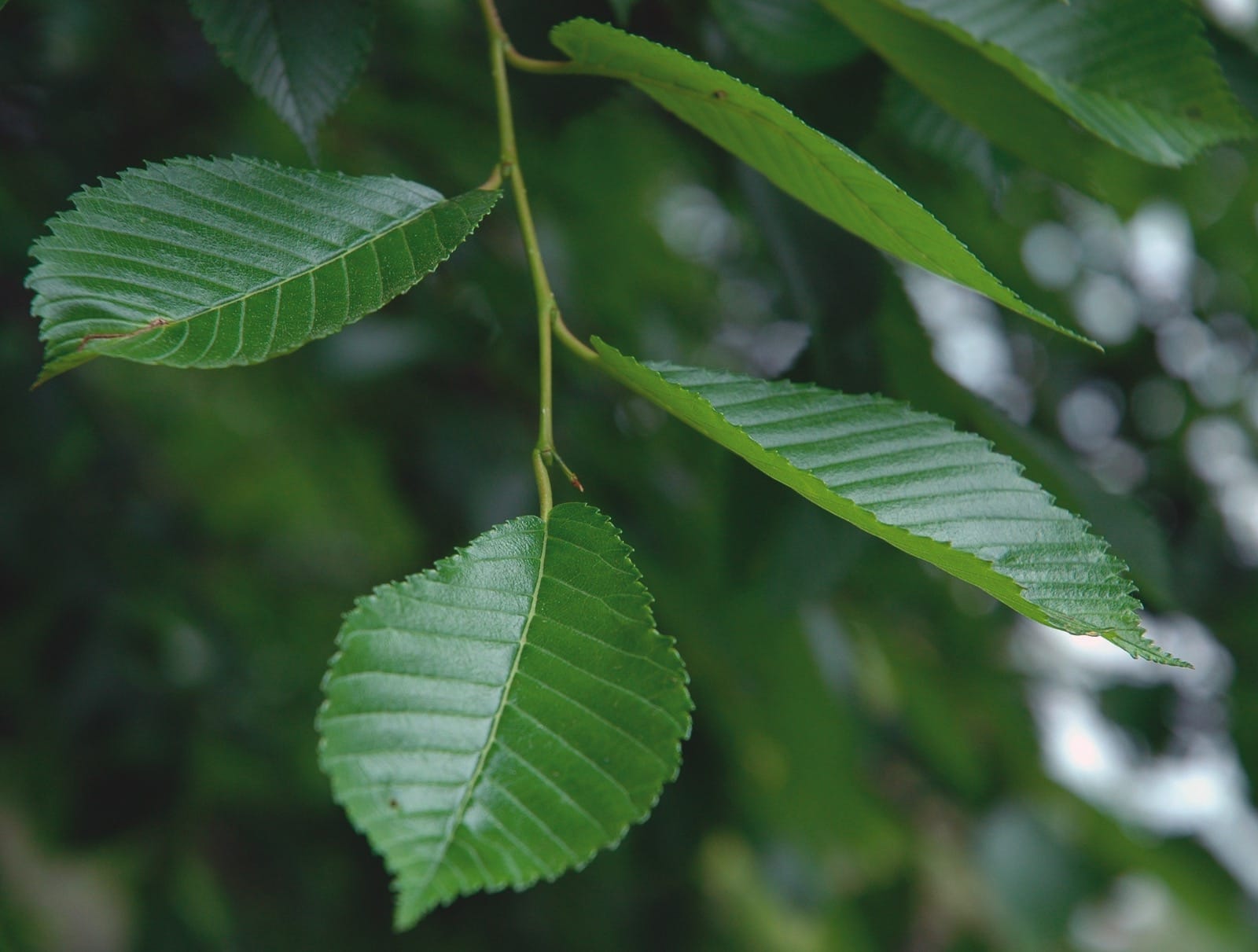Ulmus davidiana
Credits
Article from New Trees by John Grimshaw & Ross Bayton
Recommended citation
'Ulmus davidiana' from the website Trees and Shrubs Online (treesandshrubsonline.
Genus
Common Names
- David Elm
Infraspecifics
Other taxa in genus
- Ulmus americana
- Ulmus angustifolia
- Ulmus bergmanniana
- Ulmus campestris
- Ulmus canescens
- Ulmus carpinifolia
- Ulmus castaneifolia
- Ulmus chenmoui
- Ulmus coritana
- Ulmus crassifolia
- Ulmus elliptica
- Ulmus gaussenii
- Ulmus glabra
- Ulmus glaucescens
- Ulmus × hollandica
- Ulmus japonica
- Ulmus laciniata
- Ulmus laevis
- Ulmus lamellosa
- Ulmus macrocarpa
- Ulmus parvifolia
- Ulmus plotii
- Ulmus procera
- Ulmus pumila
- Ulmus rubra
- Ulmus serotina
- Ulmus szechuanica
- Ulmus thomasii
- Ulmus villosa
- Ulmus 'Viminalis'
- Ulmus wallichiana
- Ulmus wilsoniana
var. davidiana
Synonyms
U. davidiana var. mandshurica Skvortsov
Shrub or tree to 15 m, 0.3 m dbh. Bark pale grey to grey, longitudinally fissured. Branchlets pubescent when young, sometimes with an irregularly fissured corky layer. Leaves deciduous, 4–9(–10) × 1.5–4(–5.5) cm, broadly obovate to elliptic, upper surface sparsely hirsute when young, lower surface densely pubescent when young, later glabrous with tufts of hair in the vein axils, 12–22 secondary veins on each side of the midrib, margins double-serrate, apex caudate-acuminate to acuminate; petiole 0.5–1(–1.7) cm long, pubescent. Inflorescences produced on second-year branches; fascicled cymes. Perianth four-lobed, margins glabrous. Samaras tan, obovate, 1–1.9 × 0.7–1.4 cm, densely pubescent over the seed, perianth persistent; seed positioned in centre or towards the apex. Flowering and fruiting March to May (China). Fu & Xin 2000, Fu et al. 2003. Distribution CHINA: Hebei, Henan, Liaoning, Shaanxi, Shanxi. Habitat Slopes, valleys and wetlands, below 2300 m asl. USDA Hardiness Zone 3–4. Conservation status Not evaluated. Illustration Fu & Xin 2000, Fu et al. 2003; NT873. Cross-reference K407 (as U. davidiana). Taxonomic note The more widespread U. davidiana var. japonica (Rehder) Nakai, as defined by Flora of China (Fu et al. 2003) (syn. U. japonica Rehder, U. wilsoniana C.K. Schneid., U. propinqua Koidz.), is widely cultivated, and was described by Bean and Krüssmann: B650, K410 (as U. japonica); B660, K413 (as U. wilsoniana). It differs from typical U. davidiana in that its bark is blackish and the samaras are glabrous. Owing to its wider geographical range (China, Japan, Korea, Mongolia, Siberia), it can found flowering/fruiting from February to May. Many elm experts maintain three separate species in this complex.
Whatever the taxonomic viewpoint adopted for it, the Ulmus davidiana complex is extremely important in the search for DED-resistant elms. One of the best selected clones, ‘Morton’ (Accolade), is a hybrid between U. davidiana var. japonica and U. wilsoniana – the latter recently sunk into U. davidiana var. japonica (Fu et al. 2003), so the hybrid now fits entirely within the new definition of U. davidiana var. japonica, as do several other named cultivars (discussed on p. 880). Ulmus davidiana var. davidiana is much less familiar in horticulture than these taxa, but shows great potential. It is said to have been introduced to cultivation in 1895, but only one specimen is recorded by TROBI, a 7 m tree with spreading branches planted in 1965 at Stanmer Park, Essex (Johnson 2003). When he measured this in 2002, Owen Johnson noted that it was ‘smothered in pink flowers’. Var. davidiana has only a sparse representation in other European collections, but there are wild-origin trees from China and South Korea at Edinburgh. Seed was obtained by the Morton Arboretum from the Botanical Garden of Forestry, Harbin, China in 1980, under the name U. davidiana var. mandschurica, and the resultant trees are now magnificent specimens there, up to about 12 m in 2006 and forming dense dark crowns, either rounded or vase-shaped. The leaves are quite small but a deep glossy green – described by George Ware (2000) as ‘a splendidly meritorious attribute’. Many seedlings from the Morton trees have been distributed in the Midwestern states, and it seems to be very suitable for propagation from seed (Ware 2000). Although the degree of resistance to DED varies slightly between clones, in general the U. davidiana complex is perhaps the most promising of all for the selection and breeding of new cultivars (Smalley & Guries 2000).




